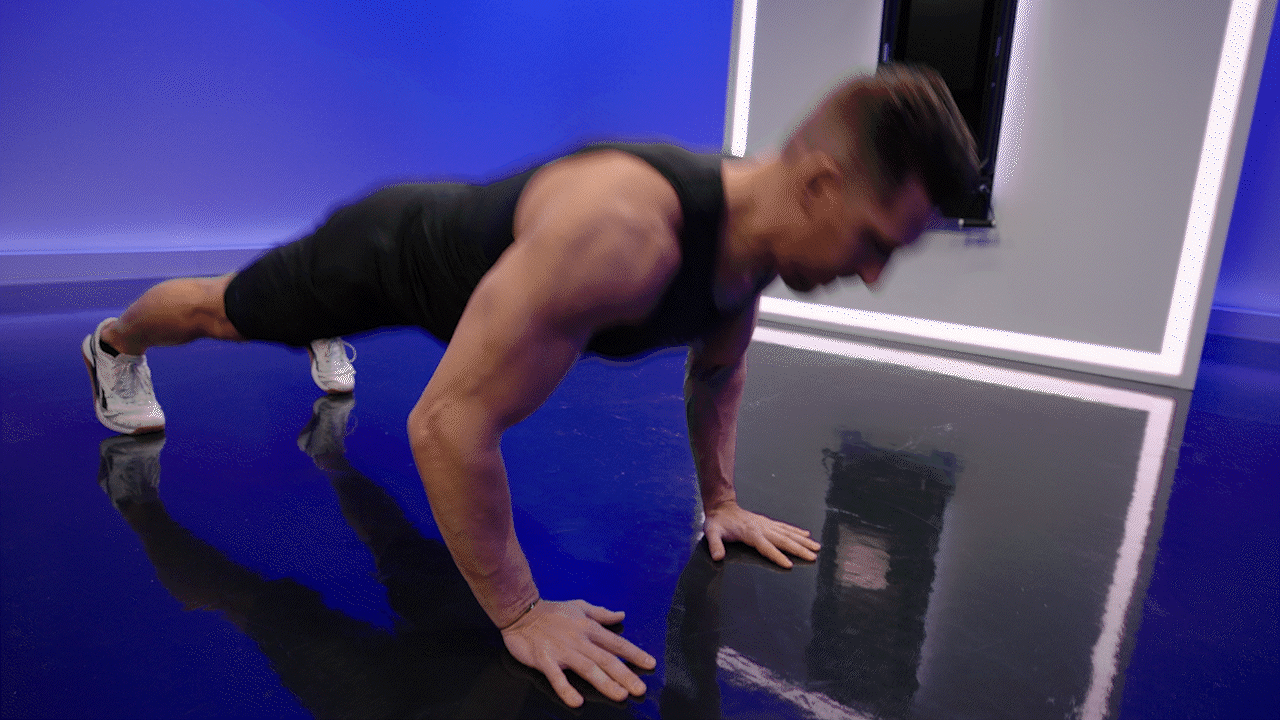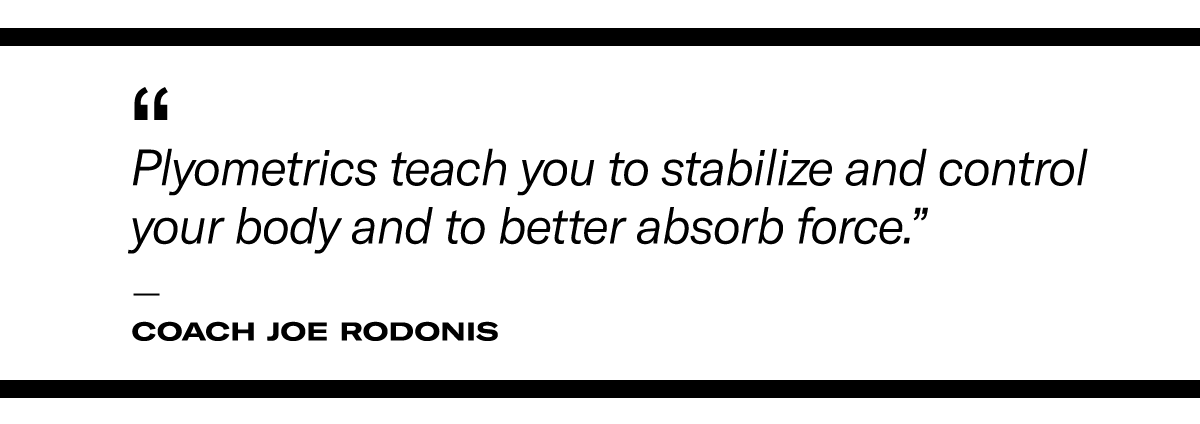Adding jumps and bounds to your training can increase speed, endurance, strength, balance, and agility.

If you feel like your fitness routine is stagnating, one way to get more bang for your fitness buck is to add plyometric exercises into your workouts. These jumps and bounds allow you to generate a large amount of force in a short amount of time, increasing speed, endurance, strength, balance, and agility. And they’re not just for elite athletes; plyometrics can benefit anyone who simply wants to improve their overall fitness.
Here’s what you need to know about plyometrics and the benefits you can reap from them when added to your routine.
What Are Plyometrics?
Plyometrics—“plyos” for short—are exercises that involve jumping or other explosive movements. They require a quick eccentric contraction, during which the muscle is lengthened, followed immediately by a concentric contraction, during which the muscle rapidly shortens.
“Plyometrics are a very athletic way of training that I think are more fun for the normal person than a lot of other exercises,” explains Tonal coach Joe Rodonis. “They’re also more effective because you expend more energy in less time.”
Think of a standing broad jump: During the eccentric phase, the hips, knees, and ankles flex as you squat down. During the concentric phase, the hips, knees, and ankles forcefully extend to propel you forward. These exercises are reactive, which means you develop force and quickly transfer it from one movement to the other.
The Benefits of Plyometrics
Increased Athleticism
Plyometrics increase muscle and tendon strength, which increases your ability to generate force, and all athletes can benefit from being able to quickly and efficiently create more power. Plyometric exercise has also been shown to increase jumping height and distance, increase running speed, agility, and stride length, as well as improve throwing, hitting, and striking velocity.
“If you train fast, you move fast, and if you train slow, you move slow,” says Rodonis. “Plyometrics allow you to develop a ton of strength and speed, but you’re also developing an incredible work capacity that will boost performance.”
Torched Calories
Though plyometric exercises are strength moves, they also tax the cardiovascular system because they are done at maximum intensity. They will quickly boost your heart rate and make you breathless, while also building muscle, all of which burns calories.
“You can run at a steady state for two hours, or you can do plyos for 30 minutes and totally gas yourself,” says Rodonis. Plyometrics also work the entire body as a system, rather than isolated muscles, which charges up your metabolism.
Injury Prevention
Plyometric exercises increase neuromuscular control and improve jumping and landing mechanics, both of which allow your body to better absorb and disperse force and reduce the risk of injury. They increase agility, stability, proprioception, and balance, and they also force muscles to contract rapidly from a fully stretched position, which is when most muscles are weakest. Training them in this way prepares them to better respond to this type of stress in athletic and real-life situations.
“Plyometrics teach you to stabilize and control your body and to better absorb force,” says Rodonis. “If you’re walking your dog and the dog reacts, and your trunk rotates and you’re pulled off balance, can you recover? Plyometrics teach your body to do that.”
Training side-to-side movement with exercises such as skater jumps and lateral bounds also improves coordination outside of our typical front-to-back movement pattern so we are better prepared for whatever life throws at us.

How to Add Plyometric Training to Your Routine
If you’re new to plyos, start slowly. Because plyometric movements are done so aggressively, they can cause stress on the joints, tendons, muscles, and ligaments. It is important to ease in and gradually increase the frequency, duration, difficulty, and intensity of the exercises. Rodonis suggests mastering the bodyweight version of each movement before advancing to a plyometric movement, because if you can’t do it slowly, you can’t do it quickly.
For example, make sure you’re proficient and balanced in a bodyweight lunge before you try a jumping lunge, or progress from a pushup to a pushup with shoulder taps before trying a clapping pushup. Even elite athletes can advance plyometrics by moving faster and jumping higher, or by doing them for longer periods of time.
“A beginner might start with 20 seconds of a certain movement, while an intermediate might do 35 and an advanced athlete might do up to 60,” says Rodonis.
It is also essential to warm up thoroughly with dynamic movements to prepare the body to absorb force before performing plyometric exercises.
To add plyometric movements to your training routine, try these five movements from the Tonal library, or check out Rodonis’ new program, Power Build, which uses plyos to develop power, velocity, and speed.
Burpee

Power up, reaching your arms overhead and landing with bent knees in a squat. Place your hands on the floor in front of your feet and jump your feet back into a plank. From the plank, lower the chest and thighs to the ground. Press back up, then jump your feet back toward your hands to land in a deep squat. Jump up, fully extending your hips and knees and reaching your hands toward the ceiling, and immediately repeat.
Skater Bound

With your legs hip-width apart, bend one leg behind the supporting leg at a slight angle. While maintaining balance on the supporting leg, simultaneously swing your arms out and leap to the opposite side. Shift your weight and land gently with the opposite leg behind you. Repeat immediately.
Jump Lunge

Begin in a lunge position, with both knees bent to 90 degrees. Press the floor away from you with the front heel and back toes, jumping up toward the ceiling and bringing your arms overhead. Switch your legs in the air, landing gently with the opposite leg forward, and immediately repeat.
Jump Squat

Begin with your feet shoulder-width apart. Bend your knees to descend to a full squat position, like you’re sitting into a chair with your arms straight down toward the floor. Engage the legs and press through your heels to push the floor away, jumping up while bringing the arms overhead. Land gently in a squat position and immediately repeat.
Lateral Bench Jump

Wrap your hands around the side of the bench and place your feet to one side with the knees soft. Keeping your arms strong and your shoulders over your wrists, jump up and bring your legs and torso to the opposite side of the bench, making the shape of a rainbow. Land softly and immediately jump back in the opposite direction. Repeat.